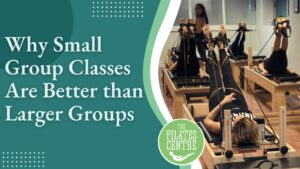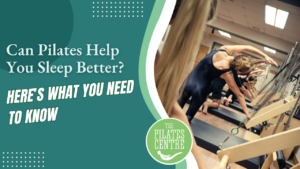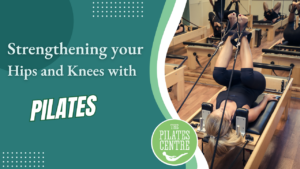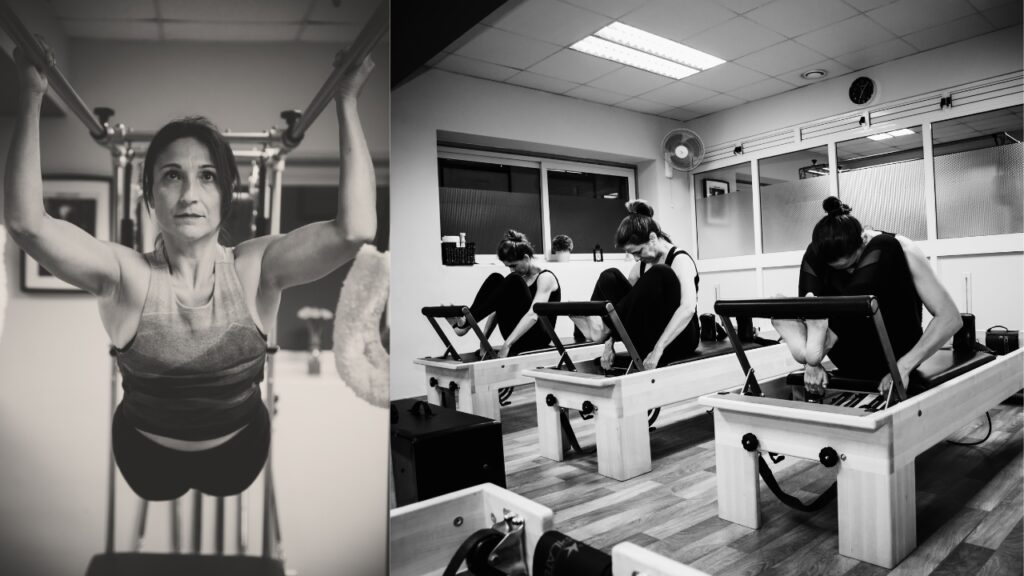
Introduction
In the world of Pilates, the choice of equipment can greatly influence the nature and benefits of the exercises you perform. Two of the most iconic pieces of equipment in Pilates are the Cadillac and the Reformer. Each of these apparatuses offers unique advantages and applications. In this article, we will explore the differences between the Pilates Cadillac and the Reformer to help you understand their unique benefits and also remind you that with other pieces of Pilates apparatus they form a system of exercises which will greatly enhance your fitness goals.
Introduction to the Apparatuses
Pilates Cadillac
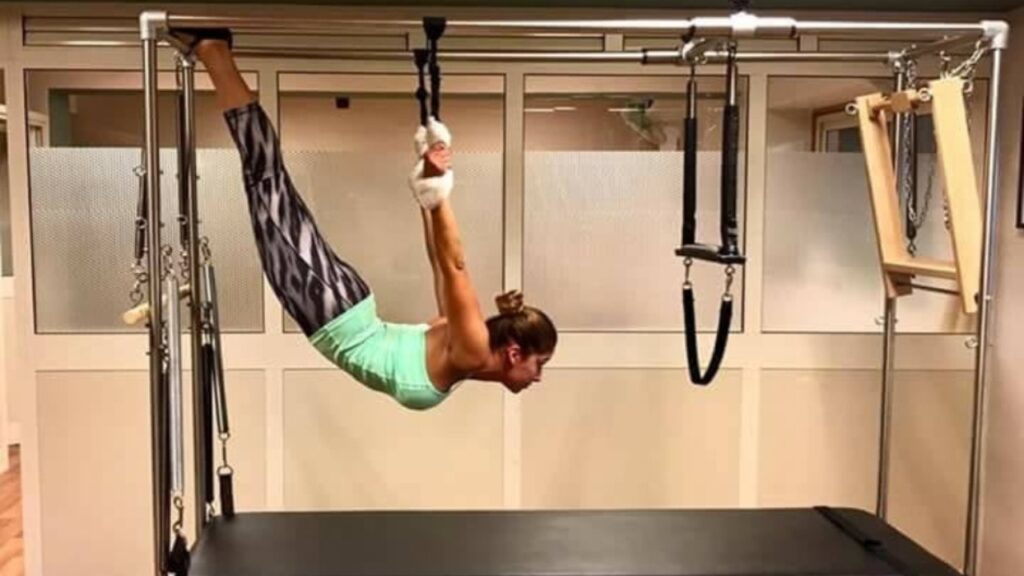
Often referred to as the “Trapeze Table,” the Cadillac is a large piece of equipment that looks similar to a four-poster bed. It features a raised horizontal platform surrounded by a frame from which various bars, straps, springs, and levers are suspended. This setup allows for a wide range of exercises, combining resistance and support.
Pilates Reformer
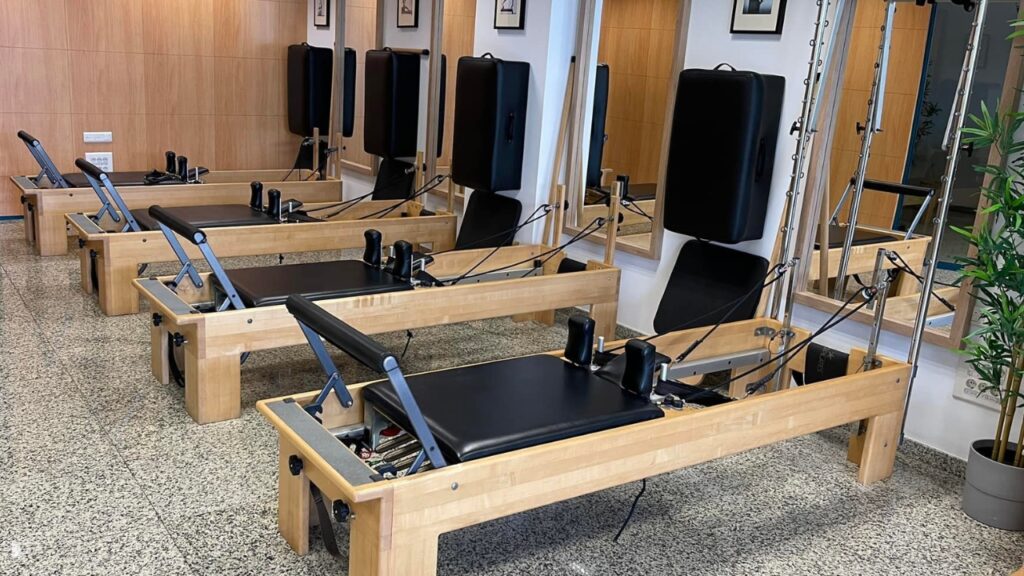
The Reformer is a bed-like frame equipped with a movable carriage that rolls back and forth. Springs attached to the carriage provide adjustable resistance, and a footbar at one end allows for a variety of exercises. The Reformer also features leather or rope straps for arm and leg workouts, making it highly versatile for full-body training.
Key Features and Benefits
Versatility and Range of Exercises
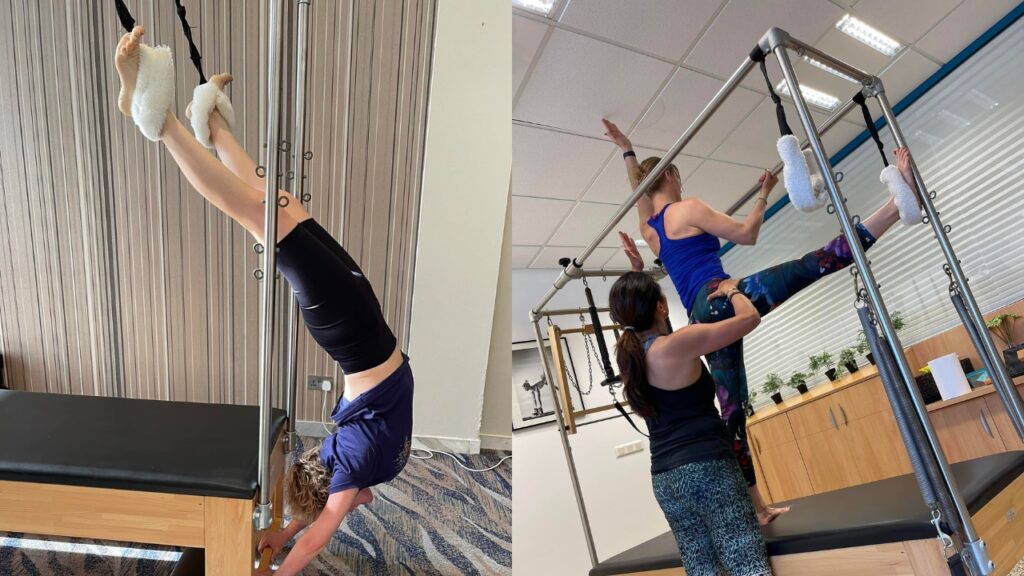
Cadillac: The Cadillac offers an extensive range of exercises suitable for all levels, from beginner to advanced. Its diverse attachments allow for both resistance and support, making it ideal for rehabilitative work as well as strength and flexibility training.
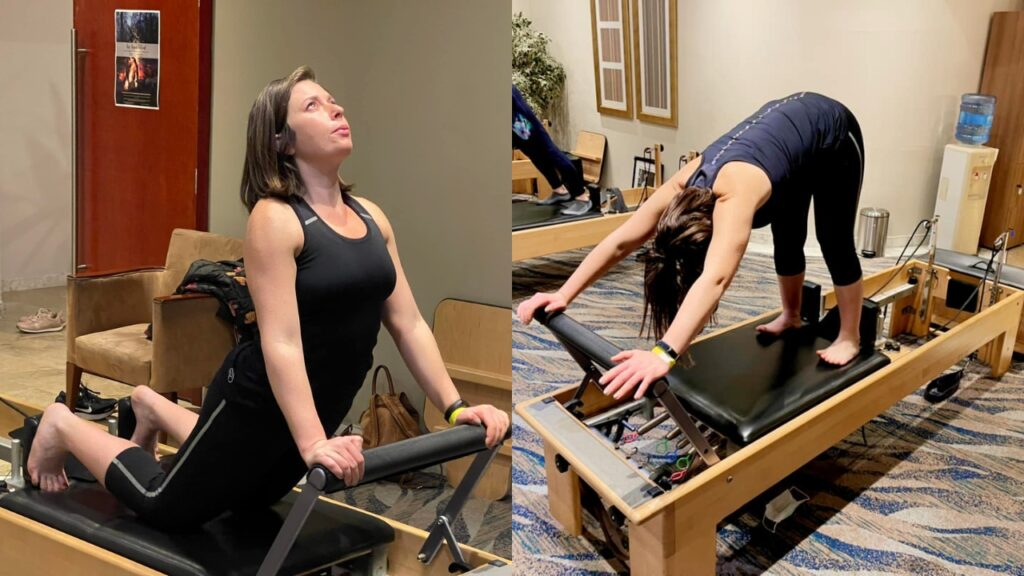
Reformer: The Reformer is highly versatile, enabling full-body workouts. Its moving carriage adds an element of instability, requiring core engagement for nearly every exercise.
Space and Usability
Cadillac: Due to its size and variety of attachments, the Cadillac takes up more space and is typically stationary.
Reformer: Some Reformers are designed to be more compact and may have wheels, making them easier to move and store vertically when not in use. Ours at the studio are more robust and are harder to move around. Some manufacturers are even making foldable Reformers which can be easily stored when not in use! Hint, hint: one for the home ..now that’s an idea 😊
Intensity and Focus of Exercises
Cadillac: The static nature of the Cadillac allows for deep, targeted stretches and muscle engagement. It is particularly known for exercises that challenge and improve spinal mobility.
Reformer: The Reformer offers dynamic movements that challenge stability and coordination. It is excellent for building strength, especially in the core, legs, and arms.
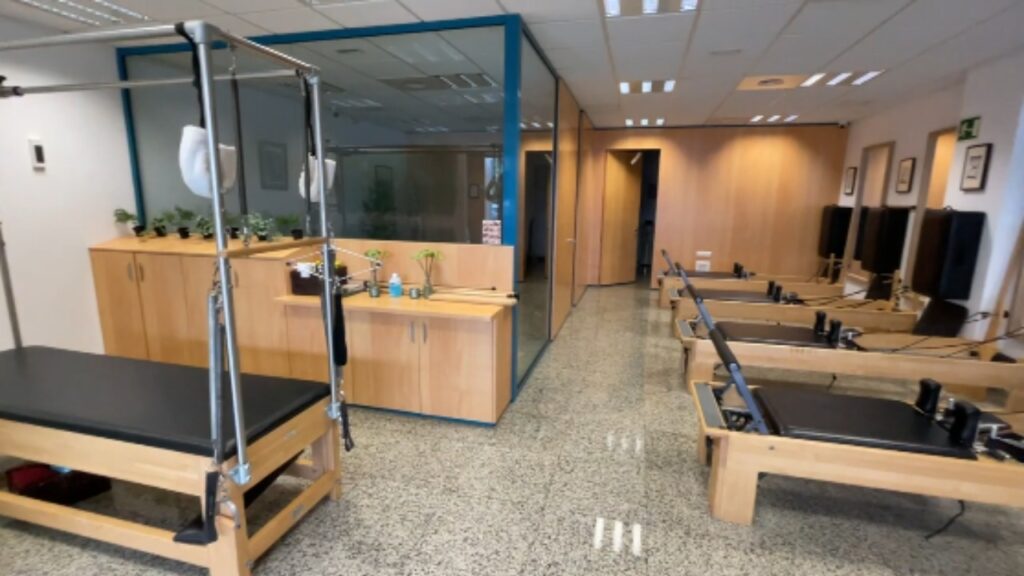
Adaptability for Different Users
Cadillac: The Cadillac is adaptable for all fitness levels, from athletes to those in physical rehabilitation. Its structure provides support and safety for individuals recovering from injuries or with limited mobility.
Reformer: While the Reformer is adaptable for most fitness levels, the moving carriage can be challenging for complete beginners or those with specific physical limitations. However, with proper instruction from a certified teacher, it can be accessible and beneficial for most users.
Training Focus
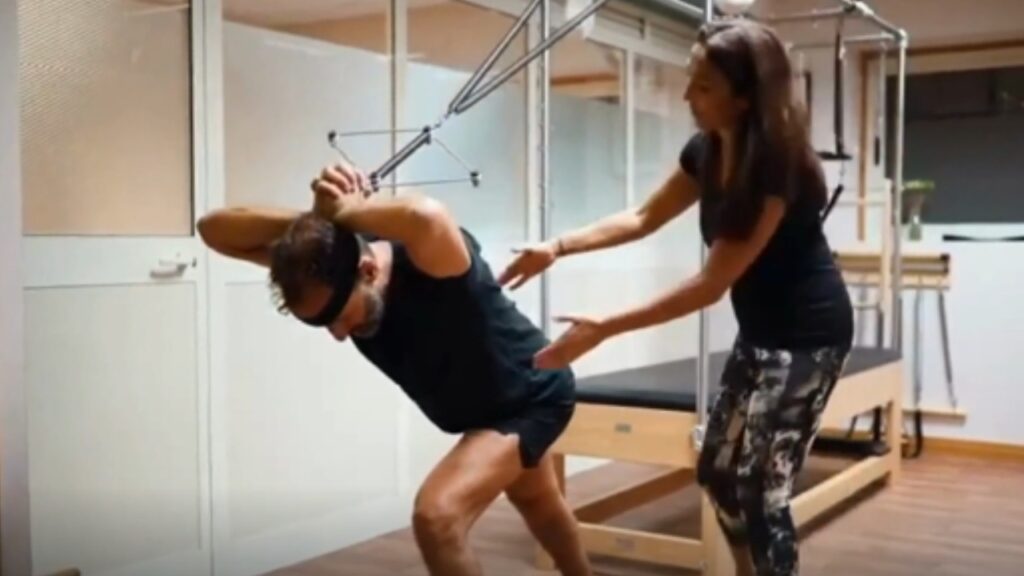
Cadillac: Often used for targeted therapeutic exercises, deeper stretches, and advanced Pilates routines that require hanging or standing on the equipment.
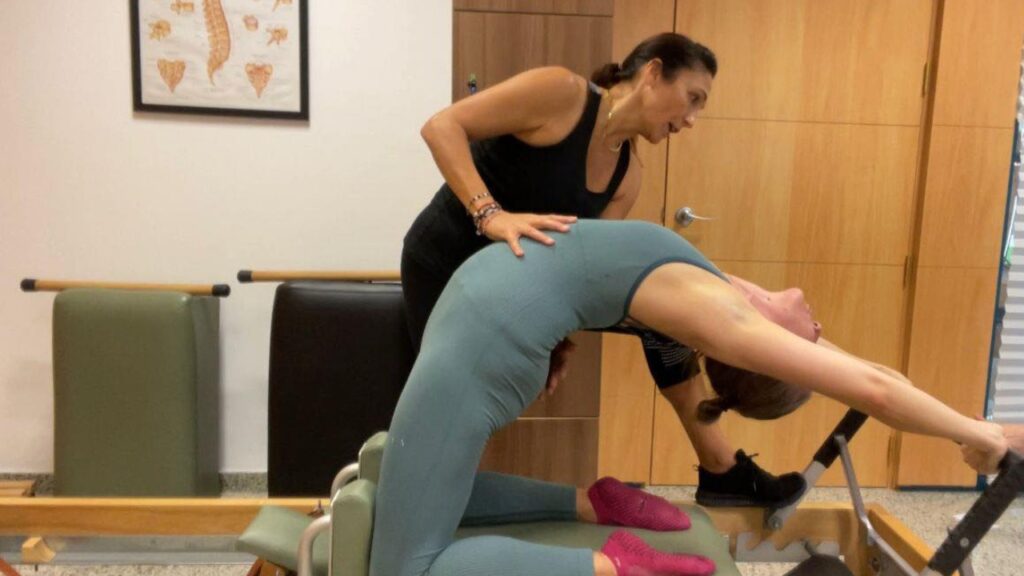
Reformer: Commonly used for comprehensive workouts, focusing on strength, flexibility, and balance in one session.
Conclusion
There is no choosing between the Pilates Cadillac and the Reformer. Both apparatuses provide an enriched Pilates experience, enhancing strength, flexibility, and mind-body connection. It’s important to note that these two pieces of equipment are part of a larger system designed by Joseph Pilates, which also includes the Wunda Chair, Ladder Barrel, and more. Each piece of apparatus works together to provide a comprehensive Pilates practice, and while the Cadillac and Reformer are becoming particularly popular, they are just as important as the other pieces in the system. To fully benefit from what Pilates has to offer, many enthusiasts and practitioners incorporate a variety of these apparatuses into their routines.

John McCallum
is an esteemed, Fully Certified Comprehensive Classical Pilates Teacher and takes immense pride as the proprietor of the distinguished Pilates Centre located in Jalon, Spain. His remarkable journey in the realm of Pilates commenced back in 2006, a pivotal juncture when he confronted the diagnosis of three slipped discs in his lower back. Pilates emerged as a beacon of profound hope and rejuvenation in his life. Instead of succumbing to the prospect of surgical intervention, Pilates gracefully assumed the role of his lifeline.
This transformative experience impelled him to make a resolute decision that would reshape his life’s trajectory. Following his journey to become a Pilates Teacher, he passionately extended the benefits he had personally garnered to those in need. This also took him to travel to other countries to continue to learn and have a fuller understanding of the method.
Fueled by an unwavering passion for Pilates, he has forged a dynamic collaboration with a reputable research institution. This strategic alliance enables him to deliver precise and illuminating insights, fostering support and empowerment for individuals interested in the power of this method. His literary contributions have garnered distinction within an array of esteemed global publications.


